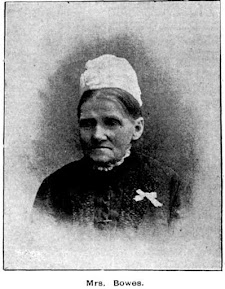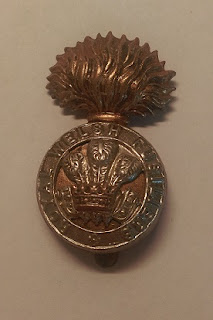One man's obsession benefits us all!
When I heard Queen Camilla would be attending a library in Sydney (she is a great advocator for reading) I thought this is the perfect segue for writing about a truly great man whose obsession has benefitted us all in NSW and in fact Australia, if not the world.
DAVID SCOTT MITCHELL
David was born on the 19th of March 1836 in Sydney, the only son of Dr James Mitchell, a physician of Scottish origin, and his wife Augusta, nee Scott. He had two sisters.
He was in the first intake of 24 undergraduates at the newly established University of Sydney in 1856 and was admitted to the Bar in 1858 but never practised the law or any other paid profession. During his twenties he led a carefree existence and a busy social life indulging in cricket, dancing, cards, debating as well as writing poetry and performed in amateur dramatics. His father was a wealthy man who had acquired large land interests in the Hunter Valley, in the Branxton and Cessnock area, where coal was found.
At the age of 29, in 1865, he became engaged to Emily Manning the daughter of Sir William Manning, a Supreme Court judge and Chancellor of the University of Sydney. Within months, the engagement was off, and Emily was in London. From that time the most significant female in his life was his cousin, Rose Scott, feminist and suffragette, who has featured on this blog earlier. (click on tag with her name below to go to that blog).
Only known photograph of David Scott Mitchell taken at the age of 30 - Dictionary of Sydney
In 1869, David's father died, and he was left with considerable wealth in which to indulge in his obsession of book collecting. He began his collection with English literature, Elizabethan dramas and 18th and 19th Century writers and poets. He was also interested in English cartoons and caricatures of the Georgian and Victorian age including rarities of Hogarth and Gillray.
David also began acquiring works on Australian and Pacific history. In Sydney, he was known to all the leading booksellers such as Dymocks and Angus & Robertson (how I miss that bookstore) and was regularly found at markets stalls, bookshops, pawnshops etc. looking for rare books and manuscripts. He had regular contacts in England who would keep him in mind when suitable books etc. came their way.
When his mother died in 1871, he moved from the family home in Cumberland Street to 17 Darlinghurst Road, where he lived increasing his collection to thousands of books etc.
17 Darlinghurst Road, Kings Cross - Mitchell Library
From the 1880s, the bookseller George Robertson gave him first right of refusal on any item of Australiana and other booksellers would go out of their way in search of rarities to get his business. In 1887 from Angus and Robertson he acquired a small library that included the First Fleet journals and other voyages of exploration. From this time, David became obsessed in collecting anything of importance that related to the history of Australia and surrounds.
During the 1890s David's health was failing and the fate of his collection played on his mind. After speaking with others and watching his rivals closely he decided to donate it all to the Trustees of the Public Library of NSW on the provision that it be housed in a building to be known as the Mitchell Library.
By 1905, when no action had been taken, a frail, ill David, demanded action from Premier Carruthers threatening to donate his entire collection to the University of Sydney or even sell it! The matter was urgently referred to the Parliamentary Standing Committee of Public Works, who engaged Government Architect, Walter Liberty Vernon, and his office to start sketching plans. After much debate the site of the building was next to Parliament House, facing the Royal Botanic Gardens and the Domain.
Of course, the next problem was the design of the building but despite these problems the foundation stone was laid by the Premier on the 11 September 1906. The building contract was awarded to the Howie brothers who had worked on the Art Gallery and a number of other public buildings in Sydney.
David approved of both the design and the site, but never visited the library built in his name.
David Scott Mitchell died of pernicious anaemia on the 24th of July 1907 at the age of 71. He was buried with his parents in the old Church of England section of Rookwood Cemetery.
Family plot of the Mitchell family - find-a-grave
David's vast collection of over 40,000 volumes, collection of manuscripts, diaries and letters, prints maps and charts etc. were formally handed over to the Trustees of the Public Library under the terms of his will. He bequeathed his entire collection with an endowment of £70,000.
The collection was housed in damp-proof boxes until the Mitchell library was ready for occupation.
The Howie brothers completed the building work in March 1908 under the eye of George McRae (the architect of the Queen Victoria Building and the subject of a previous blog; hit the tag with his name to visit that blog). It was another two years for the interior floors, furniture and finishing to be ready but finally the Mitchell library officially opened its doors on the 9th of March 1910.
Mitchell Wing of the State Library of NSW - State Library records.
David wanted to encourage Australians to acquire a better knowledge of their own culture and wanted future historians to write the history of Australia and NSW. As such his collection has created a large research collection in an area where there had been none. A truly great gift from a man with a "magnificent obsession" with a collection that is still considered as one of the best of its type in the world.
For today's blog I have referred to ancestry.com; The Dictionary of Sydney; the Australian Dictionary of Biography by G D Richardson; Wikipedia; The State Library of NSW, the Mitchell Library; "Book Life" the life and times of David Scott Mitchell by Eileen Chanin; "Magnificent Obsession" the story of the Mitchell Library, Sydney by Brian H Fletcher and other google searches.
David Scott Mitchell requested to not be named on the headstone at the family plot. It was not until the 1980s when the stone was restored that it was decided his name should be engraved upon it so that people, like you or me, can see where the man who created this wonderful collection was lying peacefully. I know if I am in the area I always visit him and pay homage as I have utilised the Mitchell Library's collection on many occasions.
The Mitchell Wing and the State Library of NSW are wonderful, combined buildings to visit; always holding exhibitions from their vast collections.
If you have any insight, reminiscences of your times at the library or just wish to comment please do so below or via the Group Facebook page found under
Rookwood Cemetery Discoveries
or simply send me a message at
lorainepunch@gmail.com
Rest peacefully David your collection is in good hands!
Until next week.







Comments
Post a Comment